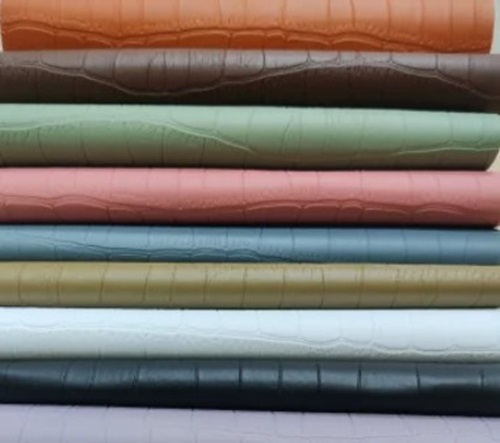Coated fabrics play a crucial role across numerous industries, including automotive, aerospace, marine, healthcare, sports, leisure, and industrial sectors. They are equally important in the furniture and hospitality industry, helping businesses meet durability standards and safety regulations. With decades of experience in crafting high-quality furniture, Falcon has developed deep expertise in selecting and using a variety of coated fabrics for different applications.
In this guide, we’ll explore what coated fabrics are, how they are made, the different types available, and their uses to help you choose the right material for your projects.
What Are Coated Fabrics?
Coated fabrics are textiles treated with a specialized layer of polymer or chemical coating to enhance their performance and appearance. These coatings improve durability and provide features like water and stain resistance, fade protection, fire retardancy, antimicrobial properties, and thermal insulation.
The coating process involves applying materials such as PVC, polyurethane (PU), silicone, or acrylic to a base textile like polyester, cotton, or nylon. Depending on the intended use—whether for hotels, hospitals, restaurants, or outdoor furniture—fabric manufacturers can customize coatings to achieve the desired level of protection, flexibility, and aesthetic appeal.
Types of Coated Fabrics
1. Vinyl Coated Fabrics
Vinyl-coated fabrics consist of a textile base, often polyester or nylon, coated with polyvinyl chloride (PVC) or polyurethane. They are widely used for their durability, cost-effectiveness, and versatility.
Advantages:
-
Waterproof: Ideal for outdoor furniture or spaces prone to spills.
-
Durable: Resistant to wear, tear, chemicals, and abrasion.
-
Cost-effective: More affordable than many other coatings.
-
Customizable: Available in various colors, textures, and designs.
Disadvantages:
-
Environmental Concerns: PVC can release harmful chemicals and is not biodegradable.
-
Less Breathable: Can be uncomfortable in hot or humid conditions.
-
Cold Sensitivity: May become stiff and crack in low temperatures.
-
Recycling Challenges: Difficult to recycle due to mixed material composition.
Best Use: Vinyl-coated fabrics are ideal for healthcare settings, hotel lobbies, and other high-traffic areas where waterproofing and durability are essential.
2. Silicone Coated Fabrics
Silicone-coated fabrics provide excellent durability, modern aesthetics, and a soft feel. They are resistant to extreme temperatures, chemicals, fire, and water, making them an eco-friendly option for long-lasting seating and upholstery.
Advantages:
-
High-Temperature Resistance: Suitable for heat-prone environments.
-
Chemical Resistance: Withstands harsh cleaning agents and oils.
-
Weatherproof: UV-resistant and perfect for outdoor use.
Disadvantages:
-
Cost: More expensive than vinyl or PU fabrics.
-
Limited Flexibility: Can be less adaptable for draped or intricate upholstery.
-
Slower Production: Fabrication takes longer compared to conventional coatings.
Best Use: Perfect for outdoor furniture and environments exposed to extreme temperatures or chemicals.
3. Polyurethane (PU) Coated Fabrics
PU-coated fabrics are lightweight, flexible, and offer a good balance of durability and water resistance. A polyurethane layer is applied to textiles like polyester or nylon, making them suitable for versatile applications.
Advantages:
-
Water-Resistant: Protects from moisture and spills.
-
Flexible: Easier to drape and shape compared to vinyl.
-
Breathable: More comfortable in hot and humid climates.
-
Eco-Friendly Options: Some PU coatings are manufactured using environmentally responsible processes.
Disadvantages:
-
Durability: Not as heavy-duty as vinyl or silicone.
-
UV Resistance: Less effective against prolonged sun exposure.
Best Use: PU-coated fabrics are widely used in public spaces and furniture that requires flexibility, water resistance, and comfort.
4. Acrylic Coated Fabrics
Acrylic-coated fabrics are known for their strong UV resistance and excellent color retention. Acrylic coatings enhance the durability of fabrics like polyester or cotton and help them withstand fading over time.
Advantages:
-
UV Resistance: Ideal for outdoor furniture or sun-exposed indoor areas.
-
Color Retention: Maintains vibrant colors even after prolonged exposure.
-
Mold and Mildew Resistance: Suitable for humid environments and healthcare settings.
Disadvantages:
-
Water Resistance: Less effective than vinyl or PU coatings.
-
Stiffness: Can be less flexible, affecting drape and comfort.
Best Use: Acrylic-coated fabrics work well in outdoor settings and high-traffic areas where UV resistance and color retention are priorities.
Choosing the Right Coated Fabric
When selecting a coated fabric, consider factors such as:
- Exposure to sunlight or moisture
- Temperature variations
- Durability requirements
- Comfort and flexibility needs
By evaluating these aspects, you can select the most suitable coated fabric to ensure longevity and performance for your furniture or upholstery project.
With over 50 years in the hospitality furniture industry, Falcon offers a wide range of high-quality coated fabrics in collaboration with leading textile manufacturers. To explore more about our fabric options and furniture solutions, visit our website today.


